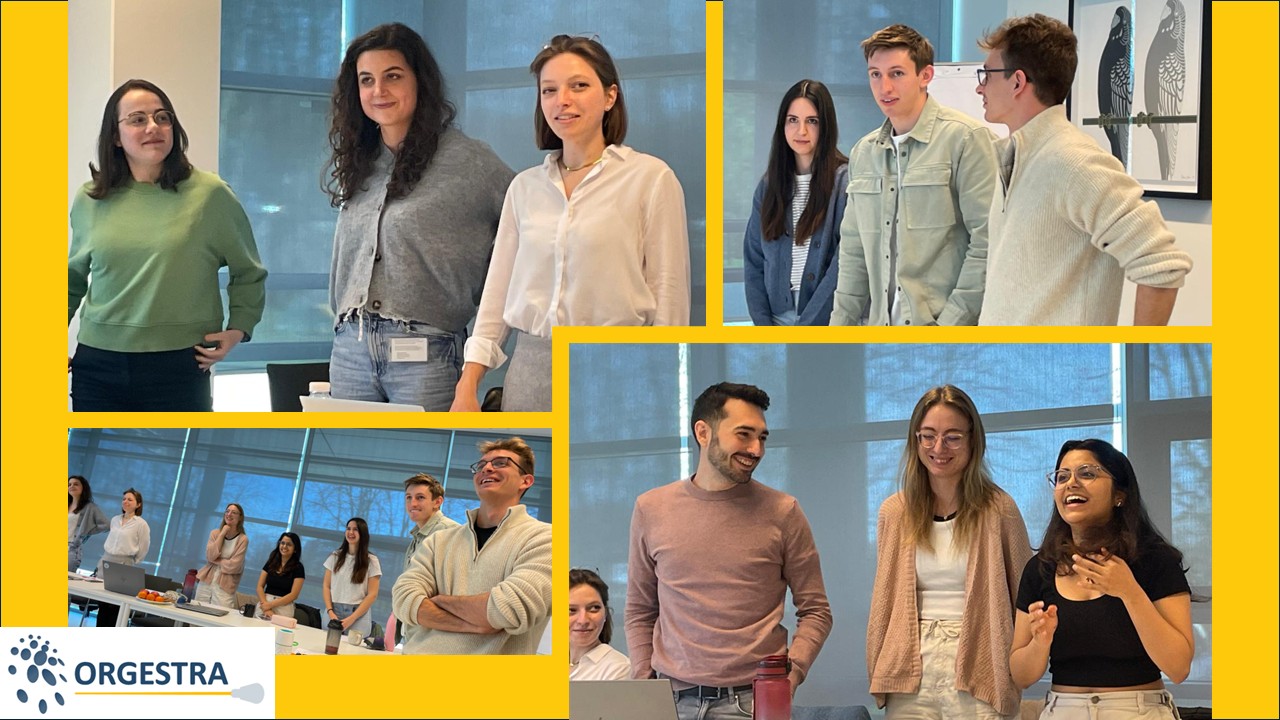Why everyone should care about rare genetic diseases
Rare genetic diseases affect about 1 in 2,000 people. What may seem uncommon at first glance affects millions of people globally. Even if you are not directly affected by a rare genetic disease, someone you know — friends, family or colleagues — may be. Most of these rare genetic diseases only have symptomatic treatments available; there is no cure.
The ORGESTRA Joint Doctoral Network is a collaborative effort that brings together 13 doctoral candidates (DCs) from different scientific fields. The network aims to train the DCs in developing organoid disease models and applying them to clinical trial design. At ORGESTRA, we focus on bringing novel therapeutic strategies from the bench to the bedside to improve the quality of life for people affected by rare diseases.
We, the DCs, would like to share our key learnings from the ORGESTRA School 1:
Step 1: Stem cell technologies – our future?
Imagine having a tiny version of an organ, grown in a lab, that mimics the conditions of people with rare genetic diseases. These “mini organs in a dish,” known as organoids, are 3D cell structures that can be created from a variety of sources. These include samples from people a certain genetic diseases, healthy donor material that has been genetically modified, adult stem cells, or induced pluripotent stem cells (iPSCs).
Organoids aim to accurately represent the biology of patients, making it a personalized medicine approach. They are ideal for studying the disease mechanism of monogenetic diseases, such as cystinosis and cystic fibrosis, caused by mutations in a single gene. At ORGESTRA, we strive to generate robust organoid models suitable for upscaling and standardization. By recapitulating disease pathology, organoids provide a solid foundation for developing new treatments and improving long-term patient outcomes.
“Sometimes multiple models are necessary to obtain a comprehensive answer. The ideal model is one that effectively addresses your research question.”
Prof. Dr. Fanny Oliveira Arcolino, Assistant Professor at Amsterdam UMC.
Step 2: Engaging people with rare diseases
Another important step for the ORGESTRA Joint Doctoral Network is to design innovative clinical trials that prioritize the interests of people with cystinosis and cystic fibrosis. This patient-centered strategy not only improves clinical trials but also our experimental design in the laboratory. By involving patients early in our projects, they can help us tailor our research goals to their real needs. They know much more about their disease than we do, so it is up to us to listen.
“We want a cure for cystinosis. Until then, we want people with cystinosis to live the best life they can.”
Dr. Tracey McCauley, on Behalf of Cystinosis Ireland, a patient organization.
Step 3: Communicate – sharing is caring
In the science world, sharing research findings is not just about publishing papers and presenting at conferences. It is also about public outreach. We aim to take our discoveries beyond the scientific community to everyday life. By making science accessible, we can inspire future generations and raise awareness of genetic diseases.
So, let’s not keep our discoveries confined to labs and journals. Let’s share them and create an impact together.
ORGESTRA – a consortium on a mission
Our mission is to improve the lives of people with rare genetic diseases. We want to translate scientific discoveries into daily life solutions for the benefit of patients with cystinosis and cystic fibrosis.
Here’s how the ORGESTRA Joint Doctoral Network makes it happen:
- Organoid technologies: Creating accurate and robust Cystic Fibrosis and Cystinosis disease models for developing innovative therapies.
- Pathway to the clinic: Prioritizing and engaging people with rare genetic diseases.
- Talk, talk, talk: Sharing discoveries not only with the scientific community but also with the public.
As Doctoral Candidates (DCs), we look forward to realizing our goals in a collaborative effort to make a significant difference in the field of rare disease research.
“The ORGESTRA School not only provided us with all the necessary knowledge about the different aspects of our projects but also brought us closer together as DCs. It gave us new ideas on how to effectively work together.”
– Ananya Singh, Doctoral Candidate (DC 8) at ORGESTRA Joint Doctoral Network.
